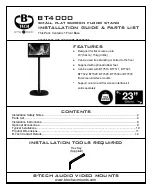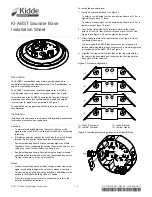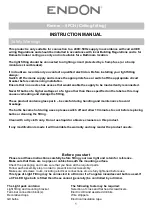
System
Unit
Functions
3-5
Hitachi Compute Rack 210H User’s Guide
RAID5
Host
Array Controller
Data
Parity
Block 5
Disk 1
Block 1
Parity
Disk 2
Block 2
Block 6
Disk 3
Block 3
Block 7
Disk 4
Block 4
Block 8
Disk 5
Figure 3-3: RAID5 method
Data is striped block by block on all the HDDs together with array parity.
Advantage:
–
As compared to RAID1, the capacity cost effectiveness is improved.
–
Data distribution onto HDDs provides data redundancy. Therefore, a read
or write can be performed on each HDD independently. Data striping on a
block basis is suitable for transaction processing.
–
Even if one of the HDDs in the disk array fails, read or write processing can
be continued while array parity is computing the lost data. HDD
interchange enables data reconstruction without shutting down
operations.
–
The array parity distributed on each HDD has the advantage that parallel
processing by independent access to HDDs is implemented during data
write operation.
Disadvantage:
–
RAID5 is inferior to RAID0 in write performance because of an array parity
generated during write processing.
–
An attempt to read or write data during data rebuild causes a decrease in
processing performance.
Number of HDDs required: 3 (min.) to 6 (max.)
















































